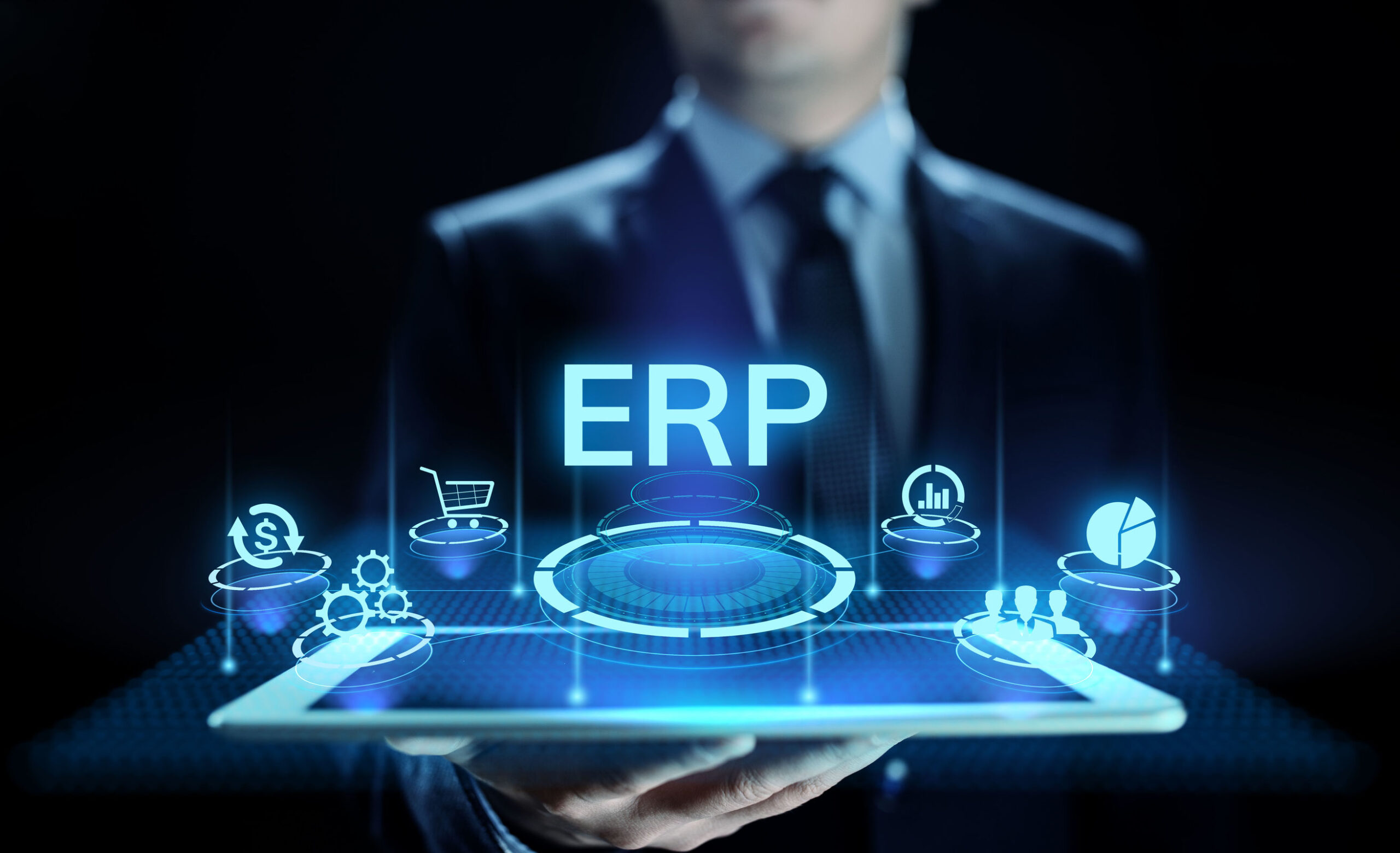Fearmongering around AI has heightened as cybercriminals leverage tools to steal identities, private information, and other treasured assets. This bad publicity unfortunately masks the world of opportunity to further improve and accelerate society with AI. To truly understand the role of AI and the risks it poses to your ERP, you must understand the truth behind its history, how it is being applied in software, and what to look out for in its usage.
A Brief History of AI
English mathematician, Alan Turing, first introduced artificial intelligence in the 1940’s. Known as the father of computer science, Turning decoded several German Enigma encryptions in World War II, but is famous for creating the Turing test, a process used to determine if a computer could think and process like a human. As AI becomes increasingly more advanced, the Turing test will take on a greater role in determining AI’s application in businesses, societies, and economies. Over the years, AI has infiltrated nearly all aspects of life. Examples include Google search, AI chatbots, GPS apps, and social media algorithms. It is also important to note that AI is not a new phenomenon – it has been around for decades. ERP solutions have utilized AI since the beginning to automate processes and improve operations, its scope has simply grown as technology advances.
We have entered a new era of predictive and generative AI solutions where the technology has become advanced enough to create content, provide detailed, educated predictions, and eventually make operational decisions. Because of this shift, the risks associated with “AI reliance” have changed.
The Dangers of Bias
Many currently view AI as an “all-knowing presence” wherein the technology replaces the need for human intervention altogether. This viewpoint neglects a key piece of information: AI was created by humans. As a result, there will always be inherent biases and errors baked into the technology, which is of particular importance to businesses looking to integrate AI into their operations.
AI applies different aspects of machine learning (ML) and data models to learn and, as a result, the technology is only as good at the information it is being fed. When a solution is created (especially a generative AI solution) it is carefully coded with algorithms for creation and is put through intensive “training” meant to provide it with its base knowledge. This training can accelerate the decision-making and time management processes for a business. However, improper training can be detrimental. Within those algorithms and data are human biases. What this means is that you can never fully trust the information being provided by the AI. In recent years, major companies, like Amazon, have fallen victim to these biases, proving that we are all vulnerable to the risks. This also emphasizes the need for verification when generating AI reports or content, using the information to make important business decisions, and eventually granting AI permission to make decisions within your ERP.
The Concept of Trust AND Verify
You must have a healthy level of skepticism when using any level of artificial intelligence in the workplace. Otherwise, companies run the risk of applying inaccurate information or even falling victim to AI hallucinations.
AI hallucinations occur when generative AI intentionally provides made-up information when it cannot find the resources the user is searching for. For example, if you were to type in Open AI, “outline the plot and ending of the fourth Lord of the Rings,” you would receive an overview of a movie that never existed. This is just one example of how AI can mislead us.
When integrating an AI solution into your ERP or overall technology stack, it is vital to understand the mechanics and nuances of the application so that you can effectively identify those biases or inaccuracies, instead of blindly following its recommendations.
The Greatest Risks AI Imposes on ERP
Society has falsely convicted cybercriminals using AI as the greatest risk to ERP; however, the real risk is when employees regularly use AI without the company’s knowledge and approval. Whether generating content, taking notes, or applying AI in other ways, externally engineered solutions can wreak havoc on your business when misused.
Employees must beg the question, “Where is this information going?” If they cannot give a definite answer, then they shouldn’t be using it! companies can find great value in internally engineered AI, such as solutions from their ERP provider, to improve productivity and growth. While these solutions are still vulnerable to cybercriminals, major software vendors take drastic measures to protect your information which ultimately mitigates your risk. All in all, do not utilize applications and tools you are not familiar with or that have not been carefully vetted by a qualified individual. In turn, ALWAYS do your due diligence to protect from deceptive information and practices.
Additionally, AI has further empowered cybercriminals to eliminate obvious phishing signs like poor grammar and incorrect email addresses to level the playing field for entry-level and experienced hackers alike. Cybercriminals are taking it a step further by creating artificial intelligence systems, such as WormGPT and FraudGPT, to create strategically convincing messages and steal information from businesses. As a result, businesses need to be aware of these risks and business vulnerabilities, making education key to identifying threats.
Advantages of AI
We are barely scratching the surface of the value computers and artificial intelligence can provide to modern society. Technology has indefinitely fast-tracked businesses to excel within their ERP solutions. This enables them to enhance their automation capabilities, daily operations, and basic business functions. Businesses can then use AI to free them from basic tasks to do more value-added work. When AI is used appropriately and properly vetted, it is an invaluable tool for businesses and will take them to previously unimaginable heights.
Conclusion
The need for human intervention will not be eliminated by AI anytime soon. For example, airlines have long relied on AI for planes to take off, fly, and land without any assistance, yet there must be two pilots staffed on every flight around the world. Moreover, AI cannot reach its full potential if someone is not supplying it with accurate, relevant information. While there are risks associated with any new technology, proper education erases the fearful image to reorient the conversation toward increased productivity and improved decision-making.




